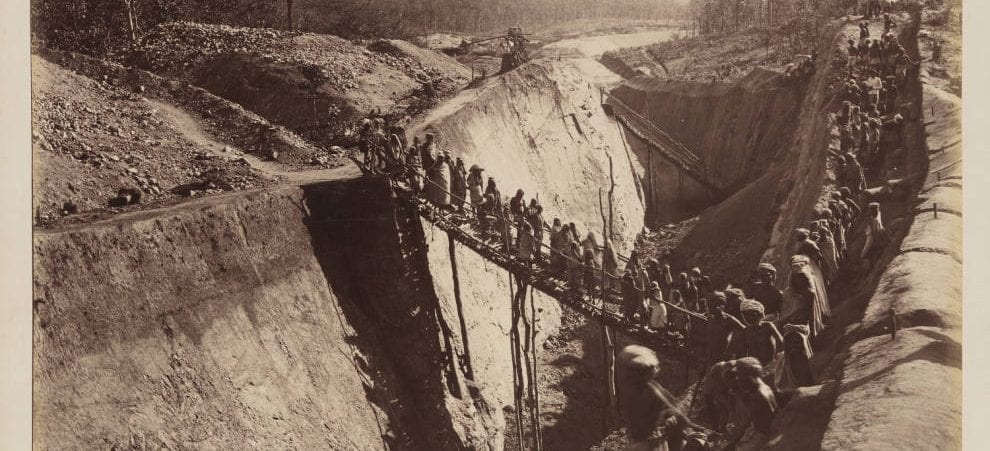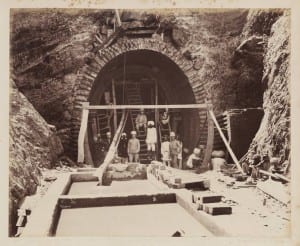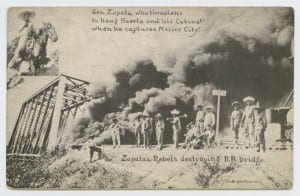http://digitalcollections.smu.edu/cdm/ref/collection/eaa/id/1473
This image was created by Townshend Phot, and is one part of a 45-piece album that depicts the construction of the Bengal-Nagpur Railway between the years of 1890 and 1897. The scene shows a group of men both Indian and British standing in front of a tunnel that they had made to accommodate the new railroad system. I found this image particularly interesting because unlike other photos from the collection, it shows both groups of people collaborating on the project. I counted four British men who I deducted were the engineers. You can tell by their more formal attire that they had no intentions of helping with the manual labor, but I was still impressed with their hands-on approach, and that all four of them were on the job site. In contrast, the Indian men were in clothes more suitable for working, and you can tell by the filth that had accumulated on them, that they had been hard at work before the photo was taken. Although the statuses of these two groups are largely separated, I did not get a sense of “master and slave” dualism that I usually associate with colonizers. This scene looks much more compliant as both groups recognize the other’s need in order the accomplish the task at hand. It also forced me to question the types of relations these men had outside of the workplace, and if the relationships that were developed here played any role in Indians gaining more respect away from the job sites. I also wondered how much (or how little) these men got paid to do such intense manual labor in unsafe and unsanitary conditions.
http://digitalcollections.smu.edu/cdm/ref/collection/mex/id/2952
The creator of this image is unknown, but it comes from 1914 and can be found in the American border troops and the Mexican Revolution collection. The text on the image reads, “Gen. Zapata who threatens to hang Huerta and his Cabinet when he captures Mexico City, Zapata’s Rebels destroying R. R. bridge.” General Emiliano Zapata played a crucial role in both the Mexican Revolution and the Peasant Revolution in Morelos. Victoriano Huerta came to power as President of Mexico following a coup, but he was largely opposed by Revolutionists such as Zapata. After 17 short months as president, Huerta was driven out of the country in 1914 by threats such as this one, and forced to resign. The image depicts a group of Zapata’s soldiers destroying a railroad bridge. I found this powerful because the railroad was obviously a product of the government, and destroying it showed intense social objection and rebelliousness. This image is also an interesting contrast to the photo I chose from the Indian collection. In one scenario, people are coming together in order to build the railroad. However, in this photo, it shows the destruction of the bridge as a symbol for the separation of two groups of people. I wonder how once the Revolution had occurred, how they went about repairing railroads and other damaged infrastructure.



